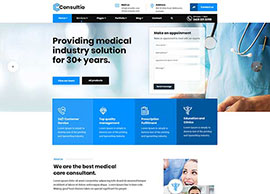We manage the USPS® permit spends for some of the largest organizations and it is amazing what most overlook regarding how they are managing this category. The lack of oversight can lead to overspending, funding issues and lost postage. This article will focus on the top things you can do to create better controls and optimize the spend.
- Use the USPS Business Customer Gateway to manage all USPS activity
This makes it easy to access everything about your relationship with the USPS from one login. Some of the highlights include:
-
- Create accounts and permits

- Manage activity and produce reports
- Create Business Reply Mail envelope templates
- See USPS incentives
- Access educational information
- Create accounts and permits
- Use the USPS Electronic Payment System (EPS) – This creates one payment linkage to your organization to fund permits and pay annual/quarterly renewals of permit fees. There is no more running around trying to cut a check to bring down to the local Post Office to pay for returned mail. It can all be funded from one place. All balances and fees can be managed online with ease.
- Use the USPS Enterprise PO Box Online System (ePOBOL) – Many companies will have multiple PO and Caller Boxes that are difficult to renew and manage especially having to interface with local Post Offices. Mailers can now manage (open, close, view, pay fees and renew) all PO Boxes, Caller, and Reserve Services for multiple locations from a single application and receives electronic notifications for renewals. With an ePOBOL and EPS accounts, commercial mailers can now pay for PO Box services with an ACH Debit payment account.
- Consolidate your locations into master permits – We see companies with tens to hundreds of permits that were taken out by different groups, at different points of time, without any centralized oversight. It is difficult to manage the balances, annual fees and funding levels. We recommend merging these accounts to master permits with sub accounts that can roll up to a central funding point. Here are the benefits:
- Eliminate Annual Fees – The USPS has come a long way in allowing mailers to pay one permit fee and mail from different locations. This can save hundreds or thousands in annual fees.
- Central visibility – Being able to see your data with ease and export reports to excel to simplify the oversight.
- Simplified Funding – Having the funds pulled from one EPS account done through an ACH connection is much easier and can make the funds available faster. Everyone has a story about not being able to get mail out until the check was cut. Now all permits can be funded from one place in real time.
- Analyze your Business Reply Mail (BRM) accounts – The best way to describe this is with an example. We have an account that has 100 BRM accounts and most were being billed at the wrong levels. They were not being centrally managed, so they were paying separate fees for each location, and since no one was looking at the amount of mail that was being returned, they were drastically overpaying for each account. As you can see from the chart below, the way each account is set up has a drastic impact on your final costs. There are two core areas to consider with Business Reply Accounts:
- How many returns do you expect to get back?
- What program should you set up that minimizes fees and postage? There are two types of fees plus the postage costs:
- Annual/Quarterly Permit Fees that range from $240 – $10,565 per year.
- Per piece return fees to get the items back that range from $.015 – $.85 per piece.
- Postage costs range from $.534-.55 per piece for a 1-ounce envelope.
To simplify this, the chart below shows that if you are getting less than 611 items back per year, you are best off with a Basic account, but higher volumes could be costing you significantly more money. This is the biggest area of overspending. In the example we discussed, the customer had three different scenarios:
- Locations doing high volumes on Basic BRM accounts. If you are getting 10,000 pieces back per year, you are overspending by $7455 ($14,240-6,785) including the cost of the annual fees.
- Locations paying for more expensive BRM accounts but getting low number of returns. If you are only getting 250 pieces back per year, it is costing you $877-10,702 vs. a basic BRM account that would only cost $590 per year.
- Locations paying for permits that are no longer active. We see a large percentage of BRM accounts where the annual permit fees are being paid but they are either getting very low return numbers (Where they should revisit if they should keep it) or no returns because it is no longer part of an active mailing program. These accounts should be cancelled, and Meter Reply can be used when needed with the metered date turned off.

- Manage your funding levels – This sounds obvious, but with scattered permits this often gets overlooked. There are either funds sitting idle for long periods of time or people scrambling to get funds added for an urgent mailing. These balances can be managed online through EPS but should be reviewed with regularity to make sure they match the future needs.
- Have a core contact at the USPS –We recommend having a relationship with someone at the USPS that can help you with your accounts. The more you can set up your account through the USPS tools, your local USPS business representative can act as an advocate for you. If you call into your local Post Office where your accounts are being managed, they should have someone that can help you or can direct you to a business representative.
- Do not put your accounts on autopilot – We recommend that you set up a set schedule to review balances, annual renewals, export details, and monitor what is happening throughout the permits you are managing. Things break when they are not being reviewed. Permit fees may not be paid by the deadlines and mail could be sitting idle, accounts could be dormant that need to be closed, balances could be too high or too low and charges could be happening that you are not aware of. This can all be avoided if there is a scheduled event to review the accounts.
- Do not assume you are getting refunds for closed accounts– This is the biggest tragedy with the USPS. If you have a permit account without activity for two years, the USPS will send one letter to the person who originally took out the permit to come into the local Post Office within 30 days to request the funds or to pay the annual fee. If this does not happen, the funds will be transferred to a different general ledger account at the USPS and it will be considered income to the Post Office for that year. You have the right to get the money back if you can prove you had a permit at that Post Office, but it is on the customer to initiate this request. The USPS will never send another notification about these funds or make them available in any public database for you to search. We had the USPS Office of the Inspector General do a research study on this and it turns out there are hundreds of millions of dollars that have been taken from customers due to the USPS not publishing these funds as is required for every other type of lost funds throughout the US. The key point is to check the balances on all of your accounts and set up a process to make sure the funds are returned on closed permits.
- Do not have permits managed throughout your field locations – Hopefully from reading through the points above, you can now see the value of having central management and oversight of your permits. The biggest problem is that these accounts were opened by different locations or departments for various purposes and over long periods of time. It is impossible to manage these funds effectively in a decentralized fashion.
What is interesting about permits, is that for many organizations they represent the largest part of their mailing budget and typically have the least oversight. The permits are used to fund marketing efforts or statement generation that are being done by different outsource providers scattered throughout the country, or Business Reply for all payments from customers, or shipments done from local warehouses and can represent a huge part of your mailing budget. The good news is ,the best tools are available in the history of the USPS to manage this category. They just require having the right oversight and expertise to make sure everything runs smoothly.














































